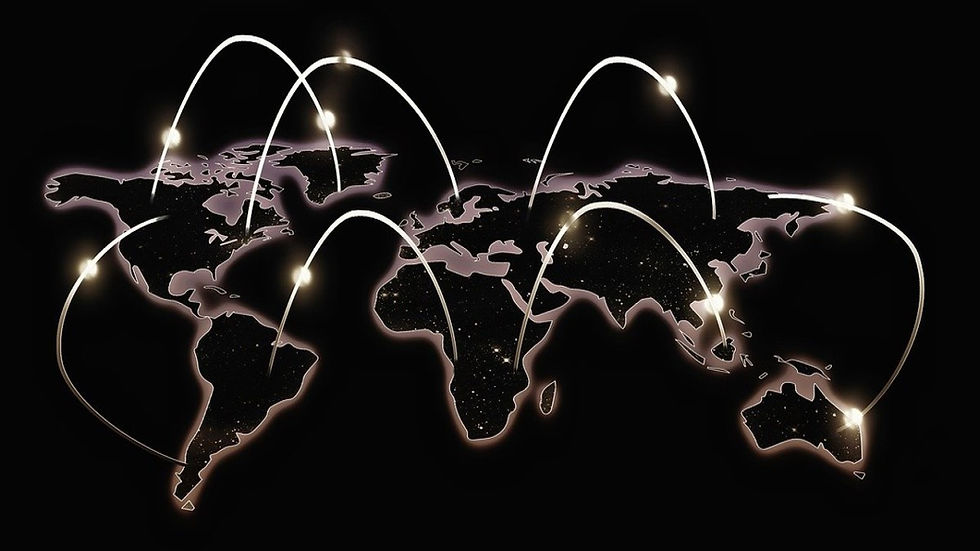Top 10 Countries with the Fastest Internet Speeds in 2025
- Abhinand PS
.jpg/v1/fill/w_320,h_320/file.jpg)
- Aug 9
- 3 min read
Top 10 Countries with the Highest Internet Speeds in 2025
Introduction
In today’s digital-first world, fast and reliable internet powers remote work, e-learning, and streaming. In this blog, we’ll explore the top 10 countries by median fixed broadband speed in 2025, backed by credible data and expert insights—perfect for tech-savvy readers and ranking high on search engines.

Quick Facts Table
Rank | Country | Median Fixed Broadband Speed (Mbps) |
1 | Singapore | 372.0 |
2 | France | 315.4 |
3 | United Arab Emirates | 314.5 |
4 | Hong Kong | 310.2 |
5 | Chile | 297.8 |
6 | Iceland | 297.5 |
7 | United States | 289.3 |
8 | South Korea | 288.5 |
9 | Switzerland | 257.4 |
10 | Denmark | 255.8 |
(Speeds reflect median fixed broadband download speeds – Institute of Internet Economics, July 2025 report) Institute of Internet Economics
1. Singapore
Speed: ~372 Mbps — #1 globally (May 2025) StatistaInstitute of Internet EconomicsSingapore’s world-class fiber infrastructure and future-focused upgrades (10 Gbps by 2028) under its Next Gen NBN highlight its digital leadership Institute of Internet Economics.
2. France
Speed: ~315.4 Mbps — fastest in Western Europe Institute of Internet EconomicsWidespread fiber rollout even to rural areas makes France a rising star in digital connectivity.
3. United Arab Emirates
Speed: ~314.5 Mbps — top in the Middle East Institute of Internet EconomicsAggressive telecom investments and modern networks drive UAE’s high-speed gains.
4. Hong Kong
Speed: ~310.2 Mbps Institute of Internet EconomicsDense urban infrastructure and smart city initiatives help maintain Hong Kong’s high rank.
5. Chile
Speed: ~297.8 Mbps — Latin American leader Institute of Internet EconomicsChile’s growing digital infrastructure boosts regional internet speeds.
6. Iceland
Speed: ~297.5 Mbps — Northern Europe standout Institute of Internet EconomicsCompact geography and investments in fiber yield ultrafast connectivity.
7. United States
Speed: ~289.3 Mbps Institute of Internet EconomicsDespite its size, the U.S. continues improving infrastructure, reaching almost 290 Mbps in many areas.
8. South Korea
Speed: ~288.5 Mbps — consistently top-tier in Asia Institute of Internet EconomicsNationwide fiber and tech innovation keep Korea near the summit of speed rankings.
9. Switzerland
Speed: ~257.4 Mbps Institute of Internet EconomicsSwitzerland's reliable infrastructure keeps it among Europe’s fastest.
10. Denmark
Speed: ~255.8 Mbps Institute of Internet EconomicsProgressive digital policies and fiber coverage maintain Denmark’s strong position.
Real-World Significance & Expert Insight
These median speeds reflect meaningful user experience—not inflated averages. They showcase how infrastructure, geography, and tech policy intersect to create digital leaders.
Expert takeaway: Countries that prioritize future-ready fiber networks and smart investments consistently rank at the top.
Frequently Asked Questions (SEO-Keyword Rich)
Q1: Which country had the fastest internet in 2025?Singapore leads with a median fixed broadband download speed of ~372 Mbps.
Q2: How do fixed broadband and mobile internet speeds differ?This ranking focuses on fixed broadband. Mobile speeds vary widely and require separate analysis.
Q3: Why are median speeds more meaningful than averages?Median speeds reflect the typical user experience, whereas averages can be skewed by extreme values Data PandasWikipedia.
Internal & External Links
Internal: Learn how fiber internet benefits remote work
External:
Singapore NBN upgrades (Institute of Internet Economics) Institute of Internet Economics
Ookla’s methodology on median vs. average speeds Data PandasWikipedia
Mobile-Optimized UX Tips
Short paragraphs and concise bullets ensure easy mobile reading.
Headings and FAQs support quick scanning and dwell time.
A visually accessible table aids immediate comprehension and bookmarking.
Conclusion
In 2025, Singapore, France, and the UAE stand out as internet speed giants—where infrastructure investment and policy converge. For readers and marketers alike, understanding these trends is key to staying ahead in digital adoption and content relevance.
Let me know if you’d like a mobile-friendly infographic or a version focusing on mobile internet speeds!



Comments